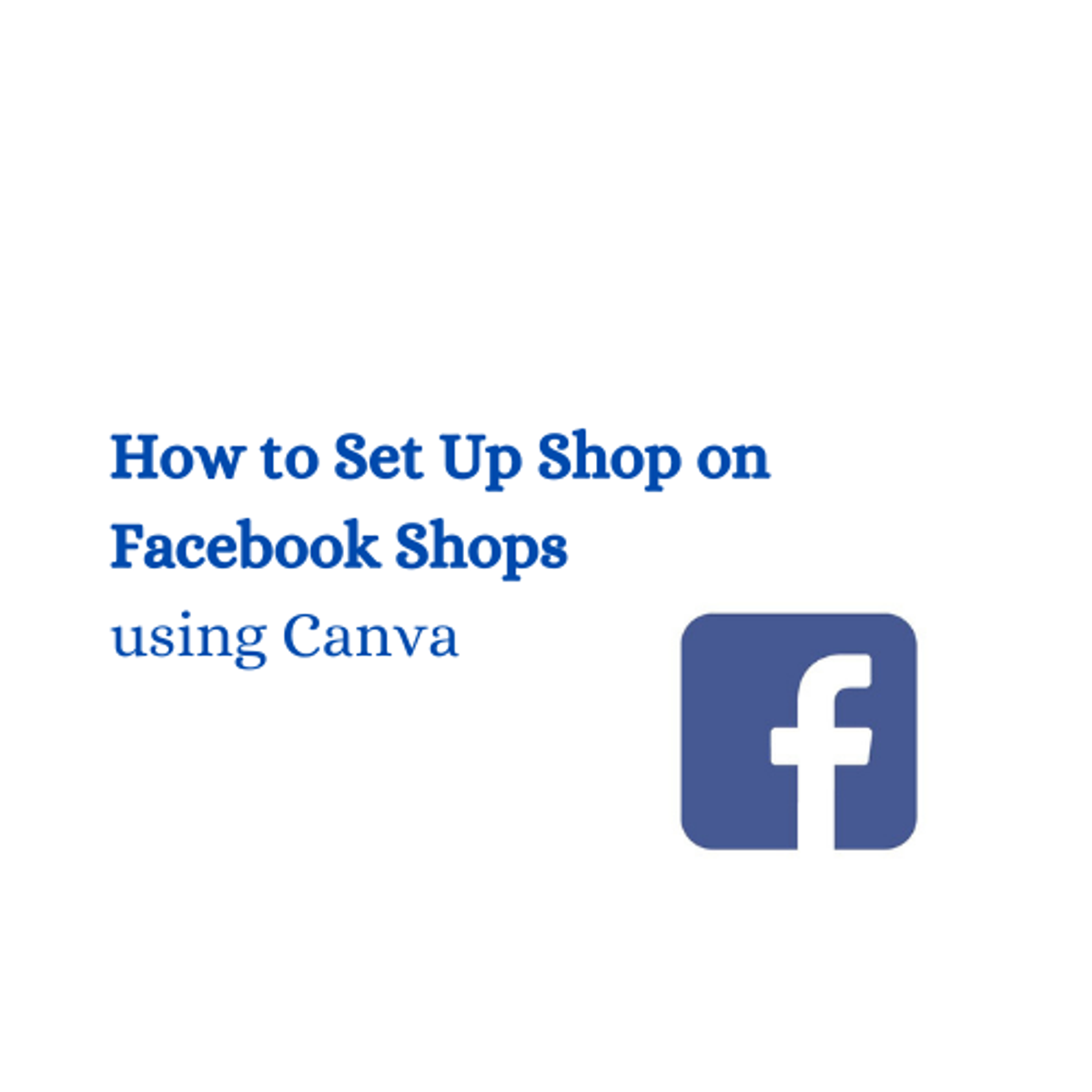Back to Courses









Marketing Courses - Page 8
Showing results 71-80 of 479

How to Set Up Shop on Facebook Shops using Canva
Throughout the project, we will be able to create a fully functioning Facebook Shop step by step. By the end of this project, you will be able to create a fully functional Facebook Shop for your business. Throughout the project, you will be able to identify and apply the functions of Facebook shop, in addition to creating a seamless experience for your prospective customers when they visit your shop.
Moreover, you will also be able to use Canva, which gives you a wide array of features that allow you to edit photos without extensive photo editing knowledge or experience.
This guided project is for intermediate users of Facebook Business users since we will develop from the basic knowledge of running a Facebook Page.
This project will provide you with the ability to create a simplified online buying and selling process for customers and small business owners.
Customer Insights: Quantitative Techniques
This course will highlight the potential of quantitative marketing research for assessing new product opportunities. In addition to focusing on the skills and practices for a successful New Product Development (NPD), the course will illustrate the multi-faceted challenges of NPD using authentic business situations. The first module will provide business practice foundations to help learners devise creative solutions to problems using a design-thinking framework. Learners will experience the idea creation process and then apply the role of surveys for evaluating consumer responses to an idea before introducing a product to market. The second module will explore the technique of conjoint analysis for quantifying the customer benefits, customer values, and the trade-off he or she is willing to make between the price of the product and desired features of the product or service. Concept testing identifies perceptions, wants, and needs of a product or service as the foundation of targeting and positioning a product in the marketplace. The third module will describe a multitude of tools for assessing technology readiness and defining the product features to target the key customer need requirements. Learners will hear an in-depth interview with one of the leading U.S. business executives on the management challenges of innovation. Learners will develop a survey (with appropriate data privacy agreements) and analyze the data for decisions about the pricing and positioning a new product into a focused market. The fourth module will illustrate the use of the tools to create a sales and pricing forecast for a new product. Three new product ideas representing three different types of market unknowns will be analyzed using market research tools. Upon completion of this course, the learner will have defined and redefined their product idea and created a credible sales forecast for use in an overall business case.

How to create a high-quality flyer in Adobe Photoshop
In this project, learners will get a grasp of how to create a high-quality flyer that can be used for digital use or for print use in Adobe Photoshop. They will learn how to choose the correct settings and attain a basic understanding of how to compose the visual elements in a high quality flyer. Finally they will learn how to properly export their high quality flyer.

Create a Storyboard using Canva
By the end of this project, you will learn how to create a storyboard from scratch using the free version of Canva. Storyboards are sequential breakdowns of each shot for a visual presentation. A visual presentation can include animation, live-action video, sales and marketing pitches. We can use Canva to complete this project because it provides all the tools you need to create an organized and visually appealing product while offering a variety of options for sharing and collaboration. You will learn how to plan and organize your ideas and utilize graphic design tools as you create a storyboard template for your next visual experience.
Note: This course works best for learners who are based in the North America region. We’re currently working on providing the same experience in other regions.

Introduction to Personal Branding
Though the concept of personal branding isn't new, questions remain about how to create one and, more importantly, what it means to maintain and inhabit that brand.
Learners will:
o Understand both what personal branding means and what it means to inhabit their brand
o Establish themselves on at least three social media platforms
o Create a mission statement for their personal brand
o Build a board of directors for their brand
o Become familiar with the basics of digital security and reputation management
o Create a system for on-going brand maintenance
Join instructor Kimberley R. Barker as she provides a warm, supportive atmosphere in which learners are encouraged to intensively explore themselves in order to create a personal brand that authentically and effectively communicates their values and professional gifts. Together we will build a strong community in which to provide encouragement and feedback, and support each other as learners pursue their goal of successful brand creation.

Marketing Channel Governance
This course is ideal for individuals who currently work in or are targeting opportunities in consulting and strategy, industrial sales and buying, marketing management, entrepreneurship and business development.
In this course you will gain a framework for analyzing how much warmth/friendship/socialization is needed for a range of business relationship types. You will also be introduced to the benefits and drawbacks of distributing on Amazon and other third party platforms in which third party resellers are present. You will be exposed to new platforms for B2B exchange via a guest speakers' presentation of a startup called Inxeption. Finally, you will be exposed to how multichannel routes to market can create superior value for downstream customers.

Arts and Heritage Management
Today cultural institutions are facing important dilemmas in many aspects of their management. Over the past decades, a new figure has emerged that of the art manager.
Imagine you went to work every day to connect artists with audiences, vision with reality, and money with a mission. That is what managers in the arts do, they play an essential role in transforming the minds, lives, and communities through creative expression.
This course has been conceptualized to address the need of skills and techniques to help professionals and managers in running art and cultural institutions.
Learning Objectives
There are three objectives to this course. First, we will approach the biggest issue cultural institutions face, the coexistence of managers and curators and giving evidence as to when, how, and why they can get along. Second, we will focus on some contemporary facets on what is means to manage a cultural institution and what cultural managers should expect and be able to face. And lastly, we will provide models and tools to design and implement appropriate courses of action to satisfy customers (visitors and audiences) and build an advantage over the competition.
Course Structure
The course is divided into six sections. Five sections are dedicated to specific aspects and themes of managing cultural institutions, while the sixth section is dedicated to individual interviews of prominent cultural institution managers on specific topics. The involvement of professionals and managers gives an incredible value to the learning experience of this course.
Each module is paired with a quiz and discussion forums to reflect on the variety of the heritage management, its complexity, and the power of the network that we will build together during the course.
Successful completion of the quizzes is required for a course certificate as explained in the Grading Policy page.
If you love art and want to make an impact in this unique and fantastic sector, this course will support you in understanding the peculiarities of this sector and how to leverage on its tools to make a bigger impact.
Look forward to meeting you online!
Acknowledgements:
Vatican Museums: www.museivaticani.va
Cenacolo Vinciano:
www.beniculturali.it/mibac/export/MiBAC/sito-MiBAC/Contenuti/MibacUnif/Eventi/visualizza_asset.html_1283837989.html (ITA)
FAI (Fondo Ambiente Italiano): eng.fondoambiente.it
MUVE (Fondazione Musei Civici Venezia): www.visitmuve.it
The National Trust: www.nationaltrust.org.uk
The Archeological Site of Paestum: www.museopaestum.beniculturali.it whc.unesco.org/en/list/842
Museo dell'Opera del Duomo (Florence): www.museumflorence.com
Museo del Violino: www.museodelviolino.org
_________________________________
Disclaimer - Since some of the videos are conducted with those whose native language is not English, we have decided to sometimes preserve their more emphatic speech to keep a tighter match between the audio and subtitles.

How to Crop and Resize in Adobe Photoshop
Adobe Photoshop can be a useful tool in editing digital photography, but it can also be an overwhelming program to learn how to use. In this guided project, learners will walk through a step by step process to gain the basics of how to crop and resize images in Adobe Photoshop.
First, learners will prepare Adobe Photoshop and images for cropping and resizing. Then, learners will walk through the basics of using the Crop tool in Photoshop. Next, learners will gain an understanding about how to edit images using more advanced cropping features. Then, learners will move on to understand and edit the Image Size. Finally, learners will be guided through some advanced features to resize images in Photoshop. Learners will finish this guided project with the skills to crop and resize images in Adobe Photoshop.

Establishing Product-Market Fit
Entrepreneur and investor Marc Andreessen coined the term product-market fit in 2007 when he said, “Product-market fit means being in a good market with a product that can satisfy that market.” While there are ample articles that mention the term, detailed guidance on how to actually achieve product-market fit is scarce.
Through our course we will explore an actionable model that defines product-market fit using five key components. From bottom to top, we will examine the layers of product-market fit beginning with your target customer and transitioning through your customer’s underserved needs, your value proposition, your feature set, and ultimately your user experience (UX).
Our process is an iterative, easy-to-follow guide through each layer to achieve product-market fit. This process helps you to articulate, test, and revise your key hypotheses about your product and the market so you can define and improve your product-market fit.
Using the principles of Lean Product Process, our course is structured in seven steps: determining your target customer, identifying underserved customer needs, defining your value proposition, specifying your minimum viable product (MVP) feature set, creating your MVP prototype, testing your MVP with customers, and iterating to improve product-market fit.

Create a Customer Satisfaction Survey with Typeform
In this 1-hour long project-based course, you will learn how to design and structure a customer satisfaction survey, create it on Typeform and collect answers immediately.
Note: This course works best for learners who are based in the North America region. We’re currently working on providing the same experience in other regions.
Popular Internships and Jobs by Categories
Browse
© 2024 BoostGrad | All rights reserved


